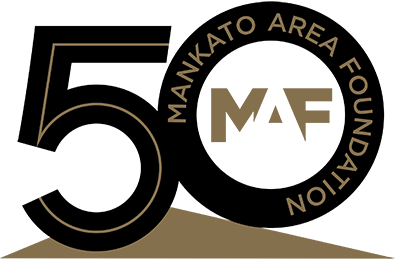Mankato Free Press (September 7, 2024)—About a year ago, Josh Madson — the black-capped, bespectacled, ebullient transplant from Fargo by way of Los Angeles — sat in a booth at the Coffee Hag in Mankato’s Old Town and wondered.
Would his ambitious plan to cover this coffee shop’s walls with black-and-white portraits resonate with people? Would anyone care? Are Mankato people camera shy? Would anyone show up?
The answers, he’d come to find out, were, in order: absolutely, very much so, hardly, and good lord, yes. So it’s no wonder that Madson almost immediately started planning the sequel.
Starting Sept. 13, the Mankato Community Collage returns bigger, taller and smiley-er than ever. More than 5,000 portraits will adorn a pair of walls in the hallways of Madison East Center. The images comprise photo shoots Madson has done around southern Minnesota since the original collage.
“It’s been quite a year. It’s really been cool,” Madson said.
He said when they initially visited the spot in the mall where the exhibit would be, it was being used to store appliances. Visiting again recently — appliances now gone and walls fully exposed — the gravity of what visitors will see hit him.
“I was like, ‘Holy crap! That is going to be filled up with our photos,’” he said. “It’s going to be something to witness. It’s 3,000 square feet of imagery and 5,000 people. I think that’s something notable. And as far as I know, they’re all Mankato people.”
The original Mankato Community Collage was arguably the artistic and social event of 2023. Launched a year ago this month, the first collage featured about 800 portraits taken over a handful of daylong photo sessions. Within hours it seemed — thanks to the fact Madson’s process had electronic versions of those photos zipping through the internet to each participant’s inbox within minutes of the shutter button being pressed — the portraits were lighting up social media feeds.
Not long after putting the initial exhibit to bed — an exhibit that turned the Coffee Hag into a virtual igloo of smiling faces — Madson’s life became a lot busier.
People would say to him things like, “You know, Josh, you might be onto something here. You could probably replicate this idea in other communities.”
As well-meaning and prophetic as those folks were, Madson was way ahead of them. Even before the igloo experience, Madson had his eye on the future. He was fairly confident, he said — given the waves of positive feedback he’d received during photo shoots and during the run-up to the MCC’s virgin run — that he’d be able to bring the same joy to other communities.
As southern Minnesota awoke to the MCC phenomenon, his phone began to ring. Other communities saw what was happening in Mankato and wondered if they could have a collage, too. Businesses called, including the Mayo Clinic Health System, which so far has had two sites — Mankato and La Crosse — where Madson has photographed all willing employees. (In La Crosse, Madson’s black-and-white images now greet hospital-goers as they exit elevators in the new bed tower. One nurse who was photographed told La Crosse TV station WXOW, “It’s fun to feel like a model. That was something to step away from work for a little bit and have a great time with it. He did such a good job.”)
Madson has also done photo shoots at Minnesota State University, at a Maverick hockey game, Gustavus Adolphus College, the city of New Ulm and more, all while holding down his regular job as an award-winning server at Number 4. (Fun fact: Madson, carless and nearly cashless after begrudgingly relocating to Mankato, rode his mom’s bike to Number 4 and begged for a job. He did well, eventually winning the Best Waiter award in the annual Best of Mankato issue of Mankato Magazine.)
While Madson still has plans to expand his portraiture empire, Mankato will always be the place where his dream to share joy went from idea to explosion in just a few weeks. It’s also the place where he got the financial backing he needed to see it through.
A little help from his friends
Madson will be the first to admit that none of what happened with the collage would have been possible without the help of a few financial backers. He got some private donations early on, enough to keep the dream alive. But it was the Mankato Area Foundation that pushed the idea forward in a way that only cash could.
